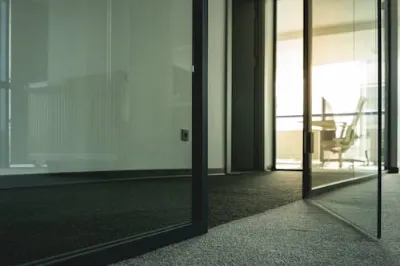
Introduction
Passive House design pushes energy efficiency to the limit while cutting reliance on outside power sources. It creates homes that stay comfortable year round with minimal heating or cooling. But how does glass fit in? Windows must deliver daylight and views without sacrificing performance. This piece dives into insulating glass and its key role in making Passive House living both efficient and enjoyable.
Passive House
What Makes a House “Passive”
The magic lies in a tight envelope. Super insulated walls, airtight construction, heat recovery ventilation, and high performance windows form the backbone. Windows stand out because they handle light, heat, and air flow all at once. Get them right, and the whole system hums along smoothly.
Why Windows Are the Weak Point
Standard windows leak heat like a sieve. Studies show they account for 25 to 40 percent of a building’s energy loss. That number jumps in older homes. Upgrading the glass system offers the biggest bang for the buck in Passive House projects. It turns a vulnerability into a strength.
How Insulating Glass Supports Passive House Standards
Balancing Light and Thermal Performance
Double or triple glazing changes everything. Two or three panes trap air or gas between them, slashing heat transfer. Visible light still pours in, often above 70 percent transmission. Rooms feel bright without the chill. Solar gain warms spaces in winter, while coatings block excess heat in summer. It works in tandem with natural light to keep temperatures steady.
Optimizing Window Placement and Orientation
Location matters. South facing windows in the northern hemisphere soak up winter sun for passive heating. They need glass with moderate solar control to avoid overheating. North sides prioritize insulation over gain, so triple panes shine there. East and west get tricky with low angle sun. Architects tweak configurations per facade. A well placed window can cut heating needs by 10 to 15 percent. Simple tweaks yield big savings.
Design and Comfort Beyond Energy Savings
Visual Connection and Comfort
Passive Houses crave links to the outdoors. Floor to ceiling glass frames gardens or skylines. Insulating glass makes it practical. Thick units maintain indoor comfort even in harsh weather. Occupants enjoy the view without drafts or glare. It elevates daily life.
Soundproofing and Indoor Well being
Noise creeps in through thin panes. Laminated insulating glass quiets traffic or wind. Thicker setups with asymmetric panes dampen sound waves better. Residents sleep deeper. Focus improves. Well being ties directly to acoustics in dense areas. A quiet home feels luxurious.
Landson Glass in Architectural Integration
Architects turn to specialists for custom fits. Landson Glass delivers tailored sizes, sharp optics, and robust builds for residential projects. Their units slot into sleek frames without compromise. Projects gain reliability from the start.

Key Components That Define High Quality Insulating Glass
Spacer and Seal Integrity
Spacers keep panes apart. Warm edge versions cut condensation at edges. Seals lock in gas and block moisture. Poor seals fail fast, fogging units and dropping performance. Long term airtightness depends on these details.
Low E Coatings and Gas Filling
Low emissivity layers reflect infrared while letting light pass. Argon or krypton gas fills the gaps, boosting insulation. The combo yields U values below 0.6 W/m²K in top setups. Comfort rises without cranking thermostats. Even on cloudy days, rooms stay cozy.
Landson Glass Quality Focus
Production lines at Landson Glass enforce tight controls. Every batch undergoes leak tests and durability checks. The result: units that hold specs for decades. Sustainability comes built in through stable performance.
Practical Considerations When Choosing Insulating Glass
Local Climate and Building Orientation
Cold zones demand triple glazing and heavy Low-E. Hot climates favor solar control coatings in double panes. Orientation flips the script again. A south window in Texas needs different specs than one in Minnesota. Match the glass to the site.
Window Frame Compatibility
Frames and glass must sync. Thermal breaks in frames prevent bridging. Mismatches waste insulation gains. Aluminum with polyamide clips pairs well with thick units. Wood or uPVC offers natural breaks. Whole window U values tell the true story.
Maintenance and Longevity
Passive House aims for set it and forget it durability. Quality insulating glass resists seal failure and delamination. Clean with soap and water. No special treatments needed. Units last 30 years or more in proper installs. Low upkeep fits the ethos perfectly.
Future Trends in Passive House Glass Technology
Vacuum insulating glass (VIG) shrinks thickness while matching triple pane performance. Pillars hold a near vacuum between panes. Weight drops, openings grow. Electrochromic glass tints on demand, controlling glare and gain electronically. Integration with building controls gets smarter. These advances push Passive House toward net zero with style intact. Innovation keeps rolling.
Conclusion
Insulating glass anchors Passive House success. It balances energy savings, natural light, and livable spaces. Comfort, aesthetics, and sustainability converge in those panes. Landson Glass supports the vision through precise manufacturing and proven reliability. The future looks bright, and clearer than ever.
FAQ
Q: Does triple glazing always beat double in Passive House?
A: Not everywhere. In mild climates, double with good coatings often suffices and costs less. Triple shines in extreme cold.
Q: How much do insulating glass upgrades add to build costs?
A: Expect 5 to 10 percent upfront for the envelope. Payback hits in 7 to 12 years via energy bills.
Q: Can insulating glass block UV fading on furniture?
A: Yes. Most Low E units filter 99 percent of UV rays. Interiors stay vibrant longer.
Q: Is vacuum glass ready for widespread Passive House use?
A: Early adopters love it, but costs remain high. Availability grows yearly.
Q: What seals last longest in humid areas?
A: Dual seal systems with silicone edges resist moisture best. Check manufacturer warranties.










